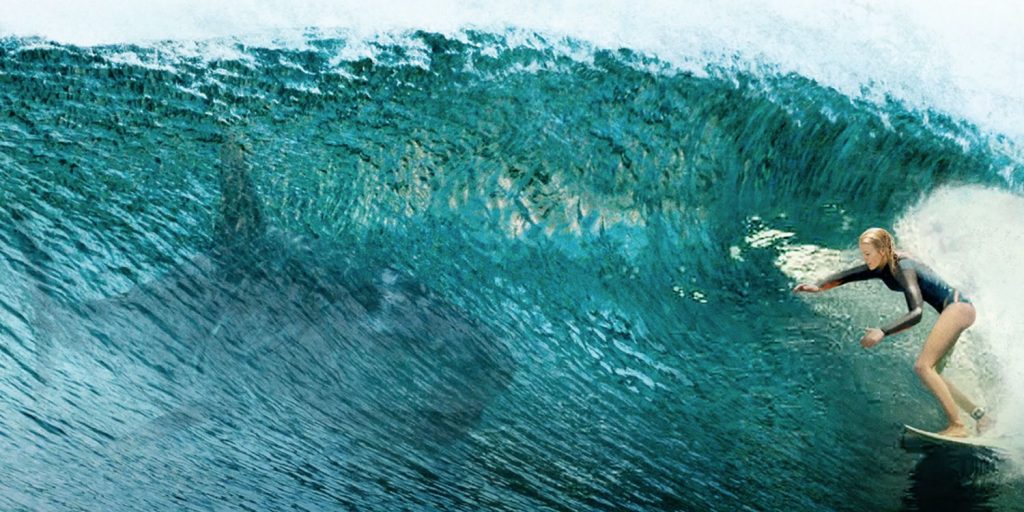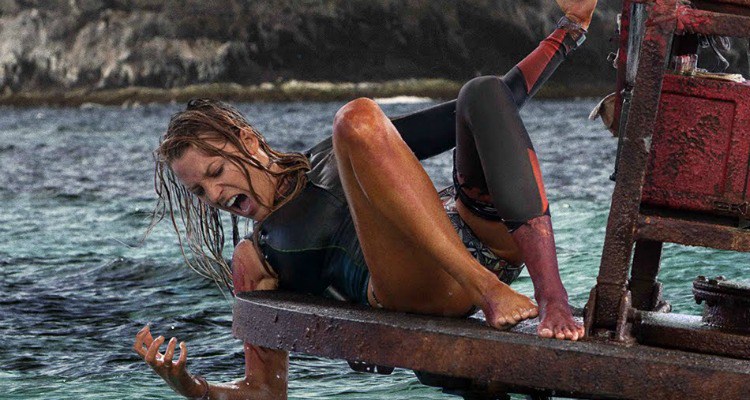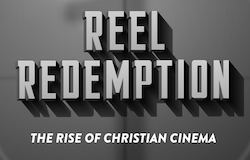No Escape, by Tyler Smith
6 Jul
Jaume Collet-Serra’s The Shallows is an effective little creature feature about a young woman trapped on a rock in the ocean, two hundred yards from shore and terrorized by a huge great white shark. As the tide rises and the rock slowly begins to disappear, our heroine must figure out how to outsmart the shark and get back to the beach. Everything is fairly straightforward and the film is sturdily-made, featuring a handful of thrills and a sustained tension throughout.
And yet the film is about so much more than this. Our protagonist, Nancy (Blake Lively), arrives at this idyllic secluded beach, and we find out more about her family life. As she avoids talking with her father and sister on the phone, we discover that Nancy’s mother has recently passed away. Unable to deal with the grief, she has dropped out of medical school and come to this beach, which has sentimental value for their family.
The beach is quiet and lonely, but undeniably beautiful. The crystal clear water, bright sun, and clean sand is everything one would want in a relaxing getaway. A buoy sways gently in the current. There are two attractive young men surfing in the water. Even Nancy herself is gorgeous, as she strips down to a bikini and hits the waves. At this point, everything on screen is ideal. It is serene and tranquil and safe. It is exactly what Nancy needs, as she attempts to push the sadness of her grief out of her mind.
There is even a moment in which several dolphins leap from the water, quickly making their way further out to sea. Nancy, elated, follows them. Surely, this is a dream. It is magical. A place this wonderful can’t possibly be real. But then, she sees it. As the dolphin pod moves further away, they pass by the bloated, rotting corpse of a humpback whale, stuck on the reef. Seagulls fly around, taking small bites out of it. It is a disturbing passing of the torch, from the majestic, playful dolphins to the decaying whale. From this moment on, the beauty of this place starts to fade away, replaced with ugliness and death.
Nancy soon discovers that the whale was killed by a giant great white shark, which immediately attacks her, ripping into her leg. She scrambles to get out of the water, actually climbing onto the whale itself. This isn’t a long-term solution, however, as the shark begins attacking – and moving – the whale. Nancy jumps back into the water and arrives at the rock. It is barely twelve feet in diameter, but it’s high enough that Nancy is safe.
Over the next several hours, Nancy tends to her wounds and tries to figure out how to get out of her situation. In the evening, she spots a fat, slovenly, drunken man passed out on the beach. She screams out, waking him up. She instructs him to get her phone out of her backpack and call for help. He then proceeds to pick up the bag and walk off with it, stopping for a moment to notice her surf board drifting in the water. The man attempts to retrieve it and is quickly killed by the shark.
This is how the film continues, replacing the idyllic fantasy for the hard, ugly reality. The dolphins give way to the dead whale. The attractive young surfers are replaced by the fat, thieving drunk. Even Nancy herself – once so beautiful – is scarred and bleeding. It continues on, as Nancy makes a break for the metal buoy, only to find it rusted and disintegrating. And, at one point, the attractive young men return to help Nancy, only to be eaten by the shark (it would appear that once the beautiful surface has been shattered, it can’t reassert itself).
Eventually, Nancy must figure out how to kill the shark. There are no other options. The buoy is destroyed, the rock is under water, and the shore is still too far away. Nowhere to run and nowhere to hide. She must confront the monster head-on and destroy it.
Through a combination of cleverness and luck, Nancy prevails and makes it back to shore, exhausted and bleeding. As her wounds are tended to, she sees her mother standing over her, smiling.
This is what The Shallows is really about. A young woman running away from her painful present into her safe, idyllic past. Of course, she still knows her mother is gone, but she’d rather not deal with the emotional ramifications of this. It hurts too much. Better instead to focus on happiness and beauty, even if it is just a facade.
However, it’s only a matter of time before the sad truth rears its head and turns the beautiful fantasy ugly. And no matter how much Nancy tries to evade the hurt, it keeps coming, relentless and unstoppable. The only way out is for Nancy to face it head-on, no longer afraid of the pain, no longer afraid of death (her mother’s or her own). Once she does this, the initial threat is taken care of, but the experience has scarred her.
And so it is with loss and grief. There is no way to avoid it. No matter how hard we try, it will always be there, circling us, waiting. It seems like we can’t bear to face it. But, to run from the horrifying truth of grief is to remain weak and vulnerable; unprepared for when it inevitably hits you. It is only in acknowledging the loss and the pain that we can begin to heal. And the healing can be long and painful, and it will never be totally complete. Loss will always leave a scar, but it doesn’t have to consume us; we can make it back to shore.





No comments yet